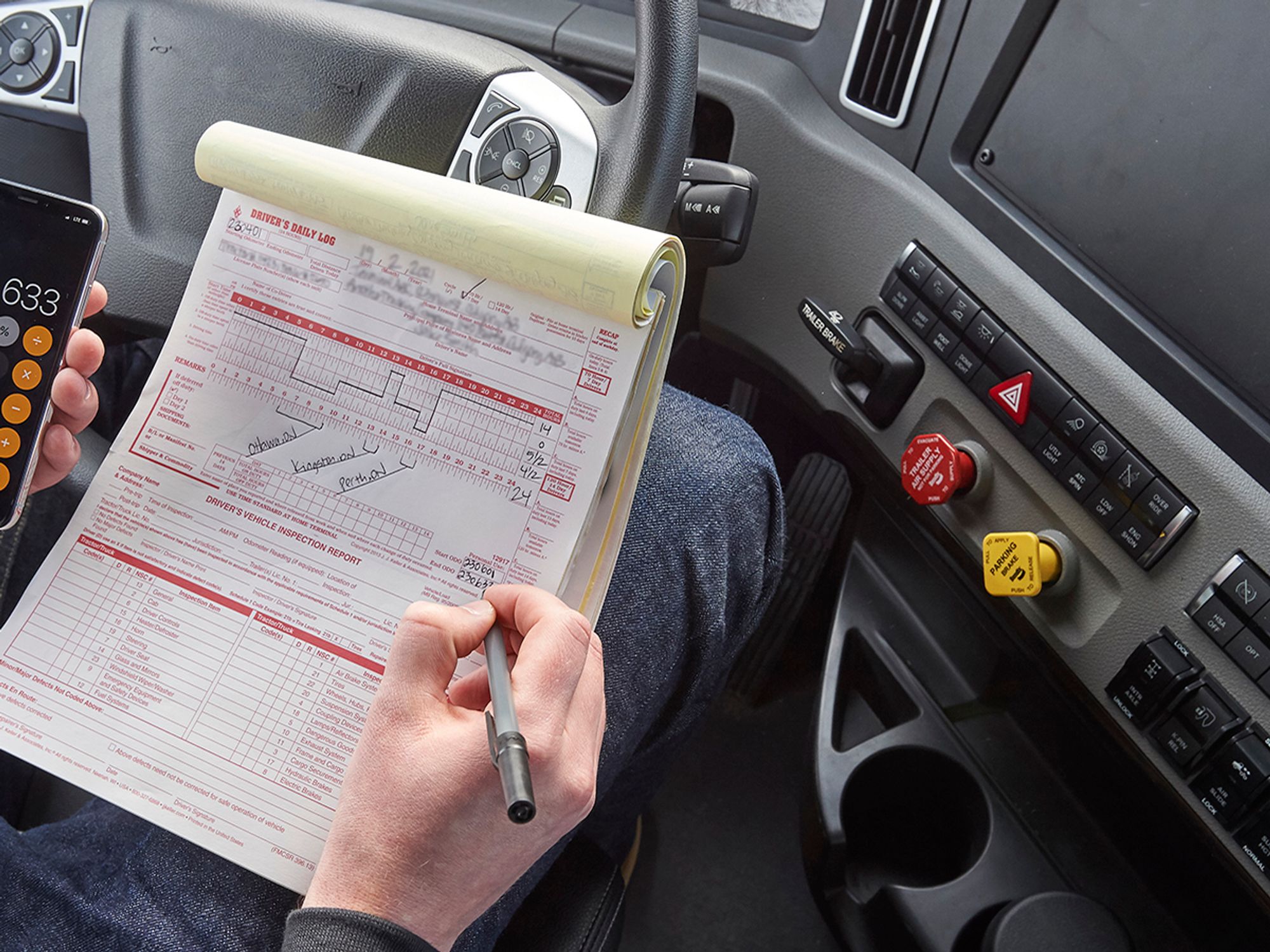Filling out the standard paper log: Graph grid, remarks & completed record

- Because the “graph grid” is where most violations occur, the driver is urged to take care to make it readable and understandable.
- The “remarks” section of the paper log is used to record the location of each change in duty status and other information relating to the driver’s daily activities but is also where the driver can enter notes regarding activities such as an inspection or fueling, or to explain why the driver exceeded an hours-of-service limit.
- Although it is not required, it is a good idea (and many carriers require it) to indicate the reason for short stops in the “remarks” section.
The graph grid
The graph grid is where most violations show up. A few simple rules for drivers can make the graph grid readable and understandable. NOTE: The numbers in parentheses () below refer to the circled numbers on the log images shown.
- Keep it current to the last change of duty status.
- If possible, use a ruler to draw straight lines. Draw the lines in the middle of the space provided for each of the categories and no one can doubt the meaning.
- Drivers are required to enter only “horizontal” lines on the graph; vertical lines at each change in duty status are not specifically required, although most companies do require them under their internal policies.
- Most logs have four categories (7) to be recorded, although operations not using sleeper berths are not required to have a “sleeper berth” row, and those using the oilfield “waiting time” exception (395.1(b)(2)) may have a fifth row to record their waiting time.
- The total of hours shown in all four categories must add up to 24 hours (8). If they don’t, there’s been a mistake.
The ‘Remarks’ section
The “Remarks” section (9) is used to record the location of each change in duty status and other information relating to the driver’s daily activities. This is also where the driver can enter notes regarding activities such as an inspection or fueling, or to explain why the driver exceeded an hours-of-service limit.
The grid is divided into 15-minute increments. In the case of short stops of less than 15 minutes for such things as tire checks or checking load binders, there isn’t enough space to accurately record such stops directly on the graph grid. Therefore, drivers can show such stops by simply drawing a line from the appropriate time marker into the “Remarks” section and noting the location and length of time stopped. Although not required, it is a good idea (and many carriers require it) to indicate the reason for short stops, e.g., “TC” for a tire check. (10).
If a change of duty status occurs at a location other than a city, town, or village, the location can be recorded in one of the following ways:
- The highway number or nearest milepost, followed by the name of the nearest city, town, or village, and the state abbreviation;
- The highway number and the name of the service plaza, followed by the name of the nearest city, town or village, and the state abbreviation; or
- The highway numbers of the nearest two intersecting roadways, followed by the name of the nearest city, town, or village, and the state abbreviation.
Drivers of property-carrying vehicles must enter additional Remarks containing the following information, if applicable:
- Oilfield waiting time: When a driver uses a normal log to show time spent “waiting” at a well site under the exception in 395.1(d)(2), a remark must be entered to indicate which periods of off-duty time were spent waiting. Those remarks are not required when using a 5-line log designed to record oilfield waiting time.
- Hi-rail vehicles: When drivers of hi-rail vehicles want to exclude transit time from on-duty hours as allowed in 395.1(w), that time must be accounted for on the logs.
The final entries drivers are required to make on the duty status record are the total miles driven today (11) and the driver’s signature/certification (12) which is the driver certifying that “...all entries required by this section made by the driver are true and correct.”
The preceding image shows a completed log with all required entries.
